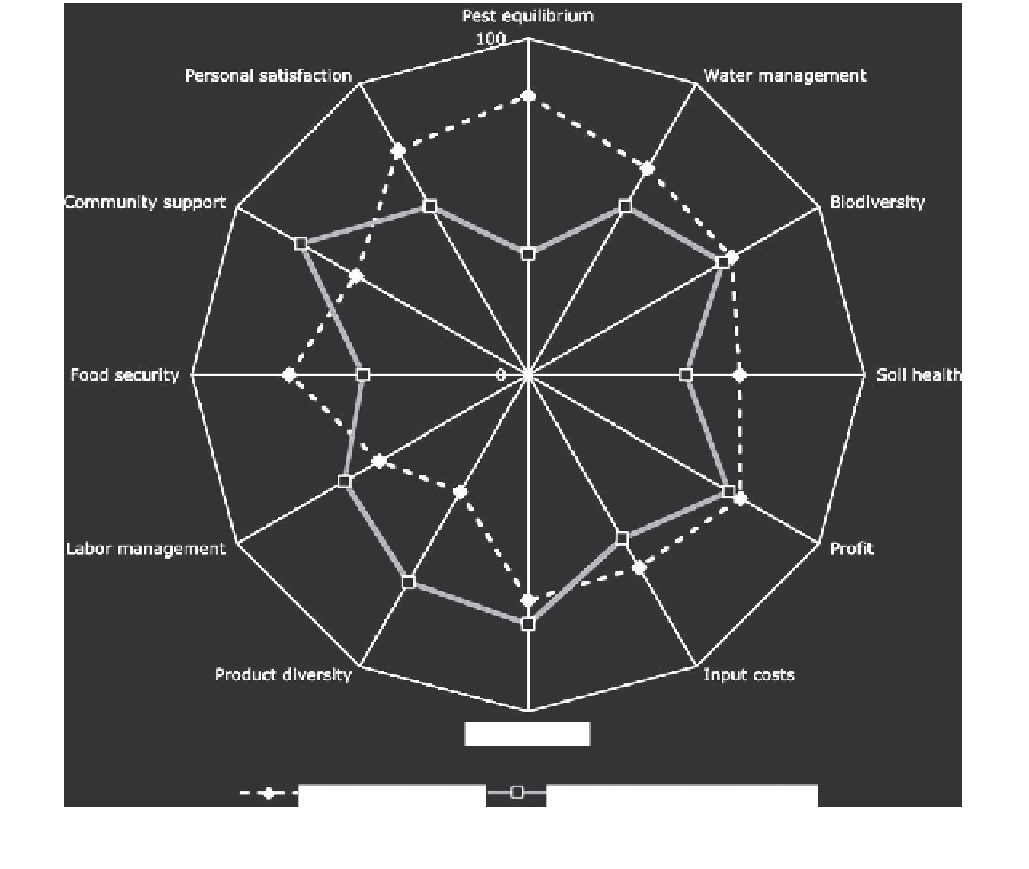Agriculture Reference
In-Depth Information
Pest equilibrium
100
Personal satisfaction
Water management
Community support
Biodiversity
Food security
Soil health
Labor management
Profit
Product diversity
Input costs
Market access
Organic apple orchard
Organic flowers/vegetables/fruit
FIGURE 21.3
An amoeba-type diagram comparing the sustainability of two organic farms in Santa Cruz County, California.
A combination of ecological, economic, and social indicators were used in the analysis.
Comparative analysis of multiple farms or farming
systems is yet another means of assessing sustainability.
Comparing a broad range of ecological and economic
factors derived from the simultaneous study of contrasting
farming systems over several years, especially when con-
ventional and alternative practices are involved, will show
factor differentiation through time (e.g., Gliessman et al.,
1995). Correlating factor levels with crop performance can
give indications of sustainability.
Survey instruments such as interviews and question-
naires can also be applied to multiple farms and farmers,
with a set of parameters of sustainability being used to
gain a bigger picture of the relationship between farm
performance and farmer practice. For example, Pretty et
al. (2000) carried out a survey of over 208 agroecologi-
cally based projects and initiatives in 52 developing
countries involving almost 9 million farmers on 28.9
million ha of land in Africa, Asia, and Latin America.
By using the promoted agroecologically based practices,
yields were increased by 48 to 93% per hectare. The
surveys were able to correlate these yield increases over
several years with one of four mechanisms: (1) inten-
sification of a single component of a farm system; (2)
addition of a new productive element to a farm system;
(3) better use of water and land to increase cropping
intensity; or (4) introduction of new agroecological
elements into farm systems and new locally appropriate
crops varieties and animal breeds. The surveys allowed
the farmers to tell their own stories of their experi-
ments in sustainability, and give us a set of field-tested
indicators.
Another valuable foundation for doing sustainability
analysis of farming systems takes advantage of multiple,
diverse, and often dispersed data sets that are connected
to agriculture in a given region. For example, the New
Mainstream Project of the Roots of Change in Califor-
nia (described in Chapter 24) has assembled an
immense data set for current California food systems.
Information that ranges from water use, number of
farms, farmgate production values, number of farmers'







Search WWH ::

Custom Search